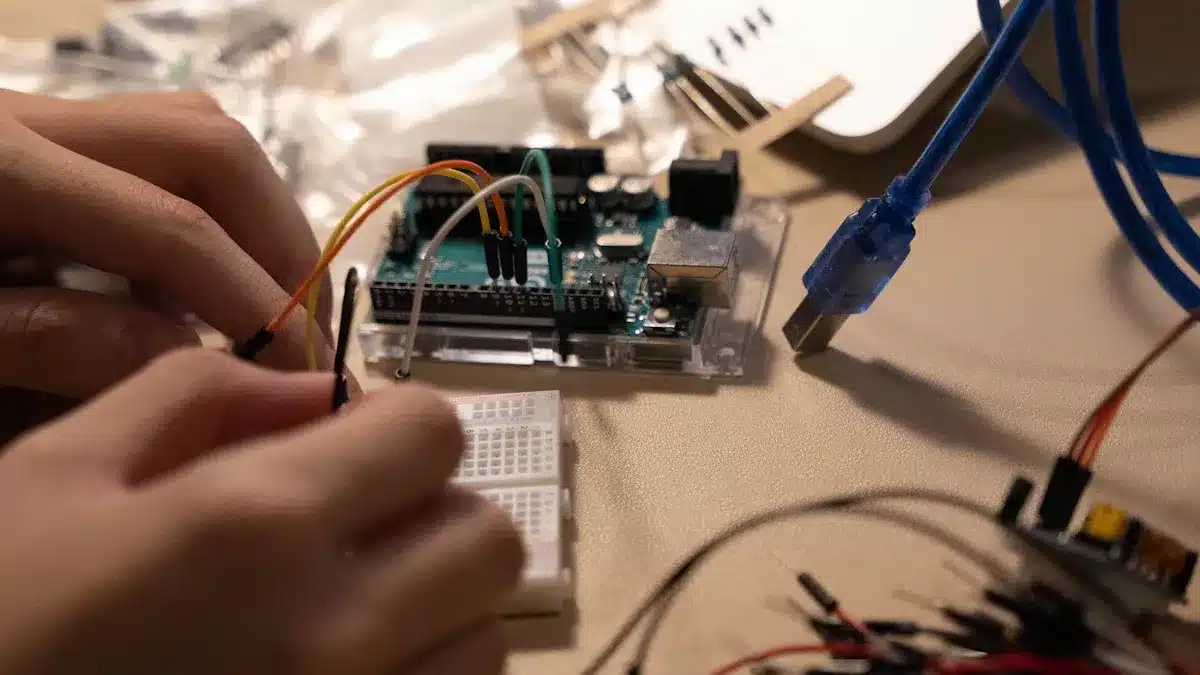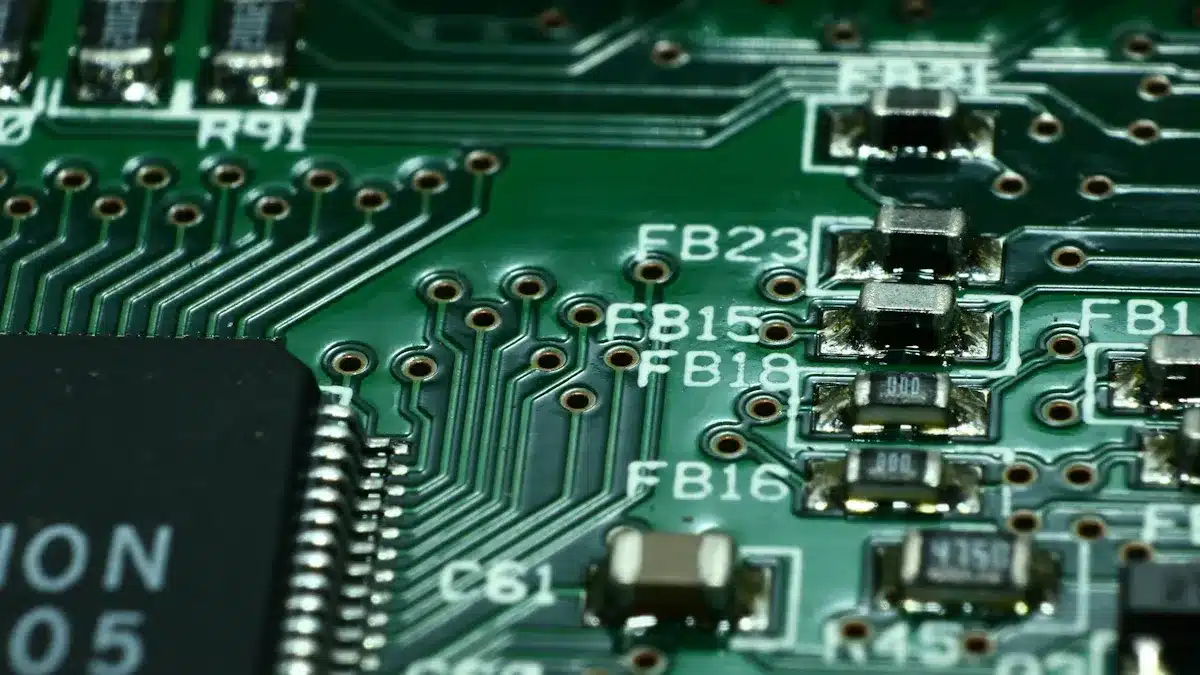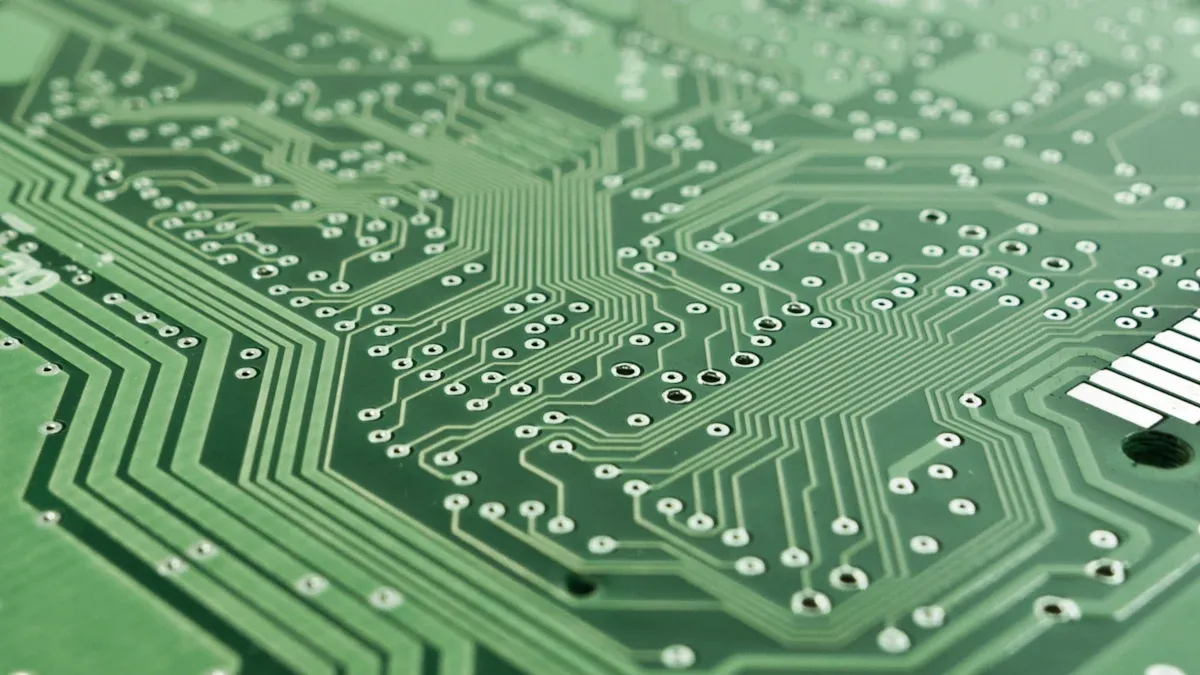
Choosing the right pcb prototyping service is crucial for your project’s success. You need to ensure the pcb prototyping service you select meets your specific needs. Consider these key factors:
Quality: High-quality pcb prototyping directly impacts the performance of your final product.
Cost: Compare quotes to stay within budget without compromising on quality.
Turnaround Time: Timely pcb prototyping helps you meet your project deadlines.
Support: Responsive customer service can assist you with any issues during pcb prototyping.
By focusing on these points, you can make an informed decision that aligns perfectly with your project goals.
Key Takeaways
Pick a PCB prototyping service that uses good materials. They should follow industry rules to make sure your product works well.
Check prices closely and look for extra costs. These can include rush orders or special tests that might go over your budget.
Choose a service that can finish your project on time. Use fast options for quick feedback and changes to your design.
Find a service with good customer support. They should give quick help and advice to keep your project moving forward.
Think about customization choices to make your PCB prototype fit your design and needs.
Quality in PCB Prototyping

When you pick a PCB prototyping service, the quality of materials and how they are made is very important. Good prototypes help your final product work well and meet what you want.
Material Quality
Choosing the right materials is key for making good printed circuit boards. Different materials have their own pros and cons. For example, FR-4 is a common choice because it is cheap and has good electrical insulation. But, it does not bend easily and does not handle heat well. On the other hand, metal core PCBs manage heat better but cost more. Here’s a quick comparison:
Material Type | Advantages | Disadvantages | Typical Applications |
|---|---|---|---|
FR-4 | Cheap; good electrical insulation; strong; easy to find | Does not bend easily; does not handle heat well | Consumer electronics, general prototyping, low-to-medium power applications |
Metal Core PCBs (MCPCBs) | Great heat management; strong; small design | Costs more; does not bend easily | High-power applications, LED lighting, automotive, aerospace |
Following industry standards, like IPC 6013C, makes sure your materials meet certain performance needs. These standards look at things like bending strength, heat properties, and electrical features. By sticking to these rules, you can lower problems like cracking and peeling, which helps your prototype work better.
Manufacturing Standards
Manufacturing standards also greatly affect how good your PCB prototypes are. The IPC-A-600 standard sets the rules for how PCBs should look and measure. This standard sorts PCBs into classes, with Class 3 needing the most reliability for important uses. By following these standards, you can reduce mistakes and improve communication between makers and customers.
New manufacturing technologies also help make PCB prototypes better. Methods like Laser Direct Imaging (LDI) give better detail and accuracy, leading to clearer circuit traces. Automation in making PCBs cuts down on human mistakes, making the production process more consistent. These improvements lead to high-quality prototypes that work well in many uses.
Turnaround Time for PCB Prototype Services

When you pick PCB prototype services, turnaround time is very important for your project. Knowing the difference between standard and fast services can help you decide better.
Standard Services
Standard PCB fabrication usually takes about 3 to 5 days for complex prototypes. For example, if you order an 8-layer board with buried vias, expect to wait this long. Simpler designs, like 2-layer prototypes, can often be ready in 24 hours or even the same day with rapid prototyping services. The average time for standard prototyping changes based on design complexity and order size.
Tip: If you need a quick turnaround, think about how complex your design is. Simpler designs usually get delivered faster.
Expedited Services
Expedited services provide fast delivery times, letting you get functional boards in as little as 24 to 48 hours. This speed helps with quick design changes and faster feedback. You can make many revisions in the time it usually takes for one. Finding design problems early through quick checks shortens development time and cuts down on expensive rework.
Fast turnaround enables:
Quick design changes
Faster feedback
Early spotting of design problems
Smoother processes through combined services
While expedited services may cost more, they work best for simpler or low-volume designs. Good design for manufacturability and clear communication can help you get the most benefits without losing quality.
Support and Customization Options
When you choose a PCB prototyping service, think about their support and customization. These things can really affect how well your project does.
Customer Service
Good customer support is very important for a smooth prototyping process. Many PCB prototyping services have different ways to help you, like email, phone, live chat, and ticket systems. Look for services that are available 24/7. This way, you can get help anytime you need it.
Good customer support includes technical help and design advice. Quick replies and updates can help you fix problems faster. For example, some companies solve issues on the first call by using smart call routing and skilled agents. This helps finish projects quicker and builds trust with you. Bad support can slow down your project and make you less happy.
Customization Options
Customization is very important in PCB prototyping. It lets you change solutions to fit your needs. Here are some common customization choices you might think about:
Type of PCB: single-sided, double-sided, multilayer, or flexible
Number of layers and thickness of the PCB
Solder mask colors beyond just green, like red, blue, and black
Surface finishing and stack-up design for better performance
These choices give you more design options, letting you create complex and compact designs. Customization can also change costs and delivery times. While more customized prototypes might cost more, they let you change designs more easily. This flexibility is very important for fields like automotive, medical, and aerospace, where special challenges come up.
Cost Considerations for PCB Prototyping
When you pick a PCB prototyping service, knowing the costs is very important. Different pricing methods can change your budget. You should also look out for hidden fees that can raise your total costs.
Pricing Models
PCB prototyping services often have different pricing methods. Here are some common ones:
Volume-Based Tiered Pricing: The price per unit goes down when you order more units. This is because fixed setup costs are shared over more items.
Material Choices: The kind of materials you choose can change the price. For example, better quality materials may cost more.
Turnaround Time: If you want your prototypes fast, be ready to pay more. Regular orders usually have lower prices.
Minimum Order Quantities (MOQs): Some services need a minimum number of units, which can change your total cost.
Economies of Scale: Bigger production amounts help manufacturers save money by improving processes.
Balancing what you need with your budget is very important. You want to get good prototypes without spending too much.
Hidden Fees
Hidden fees can really affect your total project costs. Here are some common hidden fees to be careful about:
Rush Orders: If you need a fast turnaround (2-3 days), costs can go up by 10%-30%. This is due to extra labor and priority scheduling.
Testing and Quality Control: Basic testing is cheap, but advanced tests like X-ray can be costly. However, they help lower defects.
Higher Quality Requirements: If your project needs to meet strict standards, costs may go up because of certification and inspection.
Transportation Costs: Shipping fees can add up, especially for urgent deliveries or complicated logistics.
These hidden fees can make your final costs much higher than you thought. Always ask for a detailed quote to avoid surprises.
Top PCB Prototype Providers
When you choose a PCB prototyping service, think about the best providers in the field. Here, we look at three trusted options: JLCPCB, PCBWay, and OSH Park.
JLCPCB
JLCPCB is famous for quick delivery and good prices. You can often get your prototypes in just 24 hours, depending on how complex your design is. This speed makes JLCPCB a favorite for those who need fast service. But, some users say delivery times can vary, taking anywhere from 6 days to 10 working days. Still, many customers like the quality of the printed circuit boards made by JLCPCB.
PCBWay
PCBWay has similar delivery times as JLCPCB, with fast options that can get prototypes to you in 48 hours. Users like PCBWay for its dependable service and clear tracking system. Many have said they never had order mistakes in over 100 runs of bare PCBs. PCBWay also offers full PCB fabrication services, which is great for complex designs. Overall, customers find PCBWay’s prices and service to be similar to JLCPCB, with a strong reputation for reliability.
OSH Park
OSH Park is known for its focus on quality and user-friendliness. However, its usual turnaround time is about 12 days, which is longer than JLCPCB and PCBWay. This slower speed might not work for everyone, but OSH Park’s dedication to quality often makes up for the wait. Users have given high satisfaction ratings, with many liking the detailed feedback and support they receive. While OSH Park may not be the fastest choice, it still competes well among US-based prototyping services.
User Reviews and Feedback
User reviews are very important when picking the right PCB prototyping service. Online communities and forums are great places to find helpful information from other users. These talks often cover many parts of PCB services, like quality, price, and how fast they deliver.
Online Communities
Online engineering forums, like EasyEDA, EEVBlog, and All About Circuits, are excellent for finding user reviews. In these groups, users share their stories, ask questions, and give feedback on different PCB prototyping services. Here are some common topics you might see in user reviews:
Quality: Many users often talk about the quality of PCBs, usually comparing them positively to other suppliers.
Price Competitiveness: Users like low-cost options, making affordability a common topic.
Delivery Speed: Fast delivery is seen as a big plus, which is important for prototyping.
Complexity Levels: Users talk about how suitable services are for different complexity levels of PCB designs, noting some limits for high-performance designs.
Additional Services: Some users show interest in extra services like board assembly, which can improve the prototyping experience.
These forums attract engineers of all skill levels, helping you learn about user satisfaction and problems related to PCB prototyping.
Real-World Comparisons
When comparing PCB prototyping providers, user reviews often point out both good and bad sides. Here’s a summary of the most mentioned points:
Disadvantages of Leading PCB Prototyping Providers | |
|---|---|
Fast turnaround times | Quality may be lower than final production due to material limits |
Flexibility in changing designs | Prototyping can delay regular production |
Encourages creativity and new ideas | Fewer layers compared to final products |
Shorter time to market (TTM) | Higher upfront costs for quick prototyping |
Multiple test runs for checking designs | Cost per area can make small batch prototyping pricier |
These comparisons help you understand how different providers are viewed and guide your choices. Reading user reviews can give you a better idea of what to expect from various PCB prototyping services.
Choosing the best PCB prototyping service is very important for your project’s success. When you look at your choices, think about these main points:
Quality of materials and how they are made
Time it takes to deliver and shipping options
Price and any hidden costs
Help from customer support and options to customize
Expert reviews show how important these points are. They stress the need for dependable production, quality checks, and helpful customer service. By matching your project needs with these points, you can make a smart choice that improves your product development. Remember, the right prototyping service can greatly affect your overall success.
FAQ
What is PCB prototyping?
PCB prototyping means making a few printed circuit boards to test and check them. You use these prototypes to confirm designs, see if they work, and find any problems before making a lot of them.
How long does PCB prototyping take?
PCB prototyping usually takes 1 to 10 days. This depends on how complex the design is and what type of service you choose. Standard services might take longer, but faster options can get prototypes to you in just 24 to 48 hours.
What factors affect PCB prototyping costs?
Costs can change based on several things. These include the materials you pick, how complex the design is, how fast you need it, and how many you order. Always ask for a detailed quote to know the total costs, including any hidden fees.
Can I customize my PCB prototype?
Yes, you can change your PCB prototype to fit your project needs. You can choose options like the number of layers, type of material, color of the solder mask, and surface finish. Customization helps you make the design for specific uses.
How do I choose the right PCB prototyping service?
To pick the right service, think about quality, cost, turnaround time, and customer support. Look at user reviews and compare different providers to find one that fits your needs and project goals.
See Also
Guide To Finding The Ideal PCB Prototype Manufacturer
Tips For Picking The Right PCB Fabrication Manufacturer
Selecting The Perfect PCBA Manufacturer For Your Business